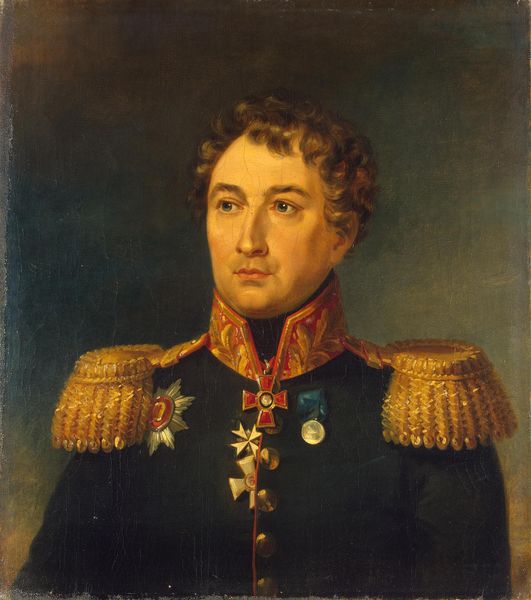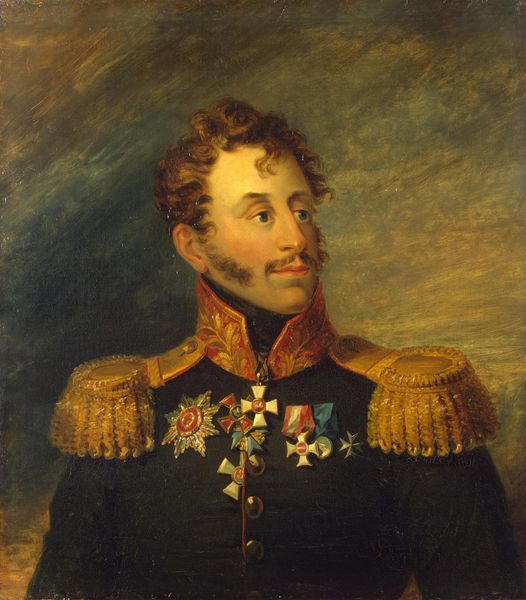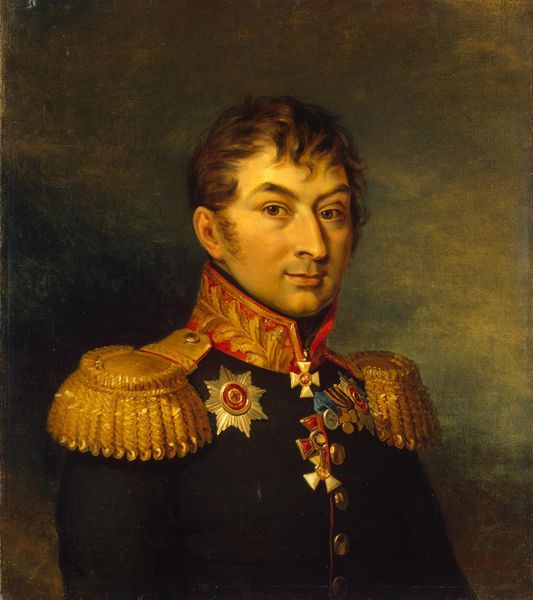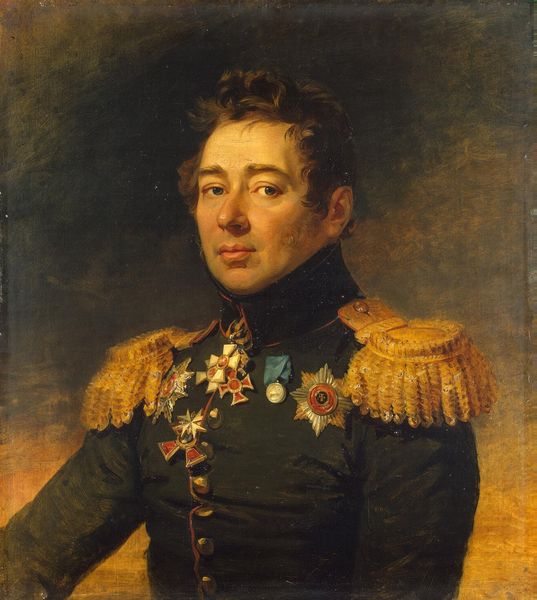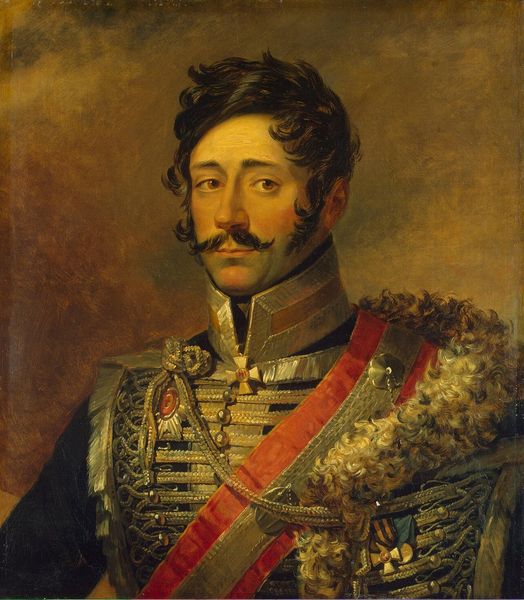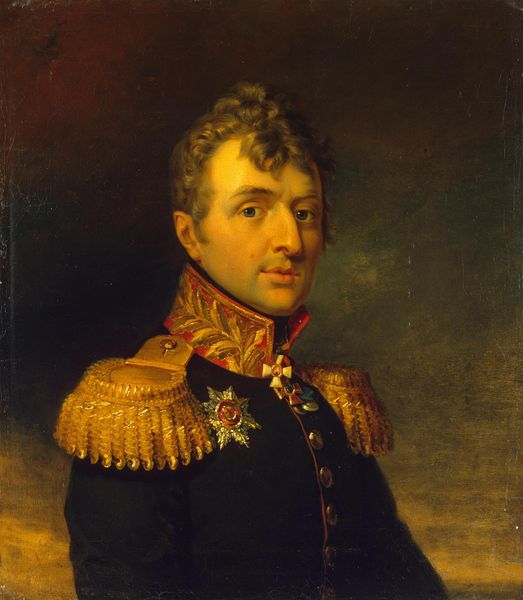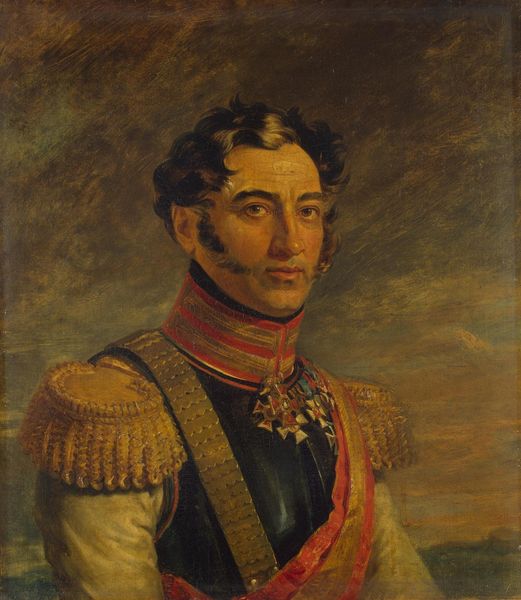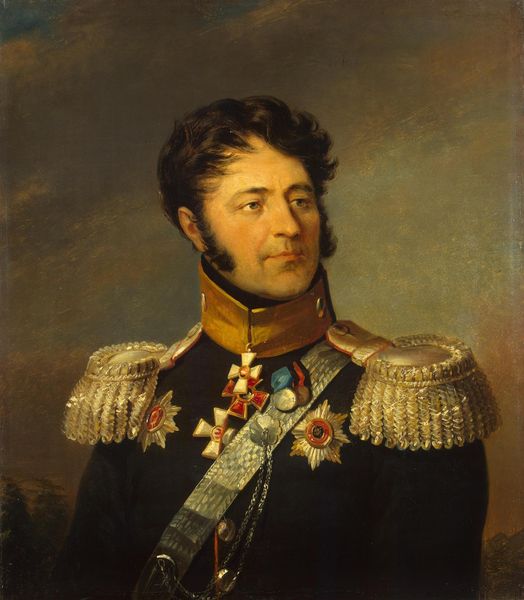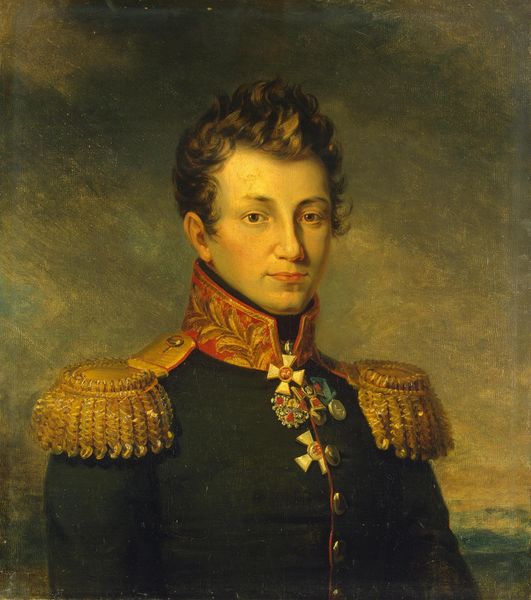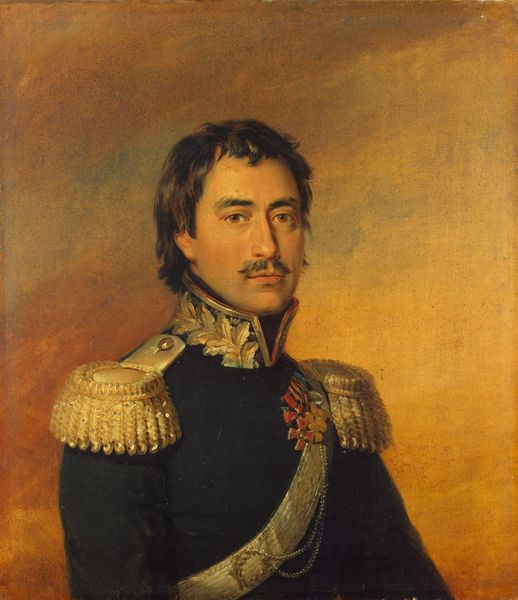
Christian Edouard Fraser (1812-79), Second Lieutenant of the 5th Dragoon Regiment 1834
0:00
0:00
charleshowardhodges
Rijksmuseum
painting
#
portrait
#
character portrait
#
painting
#
portrait subject
#
portrait reference
#
portrait head and shoulder
#
romanticism
#
portrait drawing
#
history-painting
#
facial portrait
#
academic-art
#
portrait art
#
fine art portrait
#
celebrity portrait
#
digital portrait
Dimensions: height 70.1 cm, width 60.4 cm, thickness 2.8 cm, depth 7.1 cm
Copyright: Rijks Museum: Open Domain
Editor: Here we have Charles Howard Hodges’ portrait of Christian Edouard Fraser, a Second Lieutenant, painted in 1834. The detail in the uniform is striking, it feels almost hyper-realistic against the softer background. How do you interpret this work in its historical context? Curator: This portrait invites us to consider the intersection of military power, social class, and artistic representation in 19th-century Europe. The meticulous depiction of Fraser's uniform speaks volumes about the importance placed on status and authority during that era. How do you think this image might have functioned in relation to contemporary discussions about masculinity and national identity? Editor: I suppose it projects a certain ideal, stoic yet refined, which probably helped solidify those ideals in the broader public imagination. Do you think it challenges or reinforces those ideas in any way? Curator: I think it largely reinforces them, but with subtle complexities. While Fraser embodies a certain kind of masculine ideal, the painting also highlights the constructed nature of identity itself. The very act of commissioning such a portrait was a form of self-fashioning, a way for Fraser to participate in the performance of power and prestige. Think about how rigid social structures influenced these commissioned artworks. Editor: That makes me wonder, who was this painting really for? It seems like less of a personal expression and more of a…statement? Curator: Exactly. It's a statement about Fraser's position, about the values of his class, and perhaps even about the artist’s skill in capturing all of that. Considering those social and political structures of the 1830s, that kind of statement probably carried significant weight. What new insights can you gain by questioning those very structures when we study this piece? Editor: Seeing it as a constructed performance rather than a simple depiction certainly complicates my initial understanding of the work. I'll definitely consider the role of power and identity more closely from now on. Curator: Precisely. By interrogating art’s entanglement within the complex social and political systems of the past, we gain tools to deconstruct contemporary inequalities. Keep asking difficult questions.
Comments
No comments
Be the first to comment and join the conversation on the ultimate creative platform.
